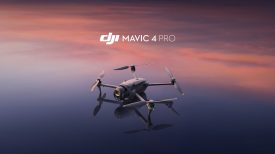Haiti Earthquake Aftermath Montage from Khalid Mohtaseb on Vimeo.
When two international TV networks asked me to go to Haiti to shoot ENG footage I was very uncertain about what to expect. Like many others I was getting my information on what was happening on the ground from the news and occasionally by word of mouth. Almost everyone who knew of my trip tried to talk me out of it, which in itself was very frustrating. The networks wanted us there as soon as possible and there was no time for preproduction or coordination.
Almost all the images and videos coming out of Haiti had become all too familiar and I knew that was not how I wanted to capture a story of this significance. The idea that life goes on even in the most horrific state of despair was fascinating to me and getting that concept across was my main goal in shooting this montage. I wanted to focus on the Haitian people and the lives that had been affected by this devastating earthquake as well as showcase how modern technology can revolutionize journalism and the way news coverage is shot.
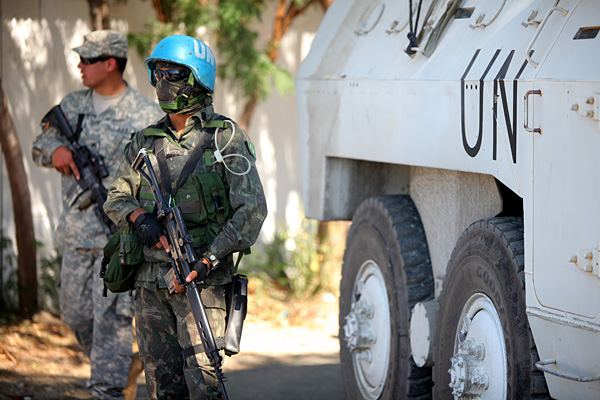
Our team of four, which also included two correspondents and a second shooter, traveled from New York City to Santa Domingo and with great uncertainty, took a bus across the border to Haiti. Our 15-hour trip ended when we were dropped off at the heavily guarded US embassy in the Haitian capital. From there we found our way to the United Nations base, where we pitched a tent and settled in along with the many other journalists based there. For the next week that tent would be our home.
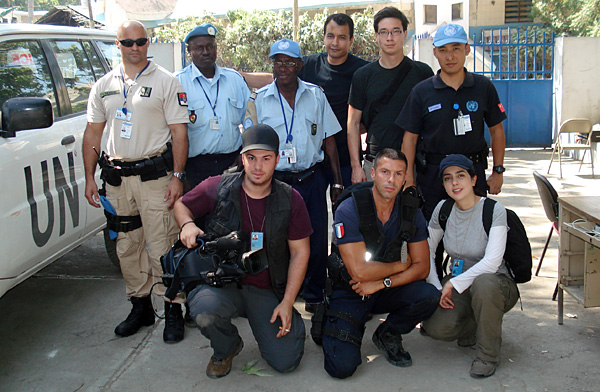
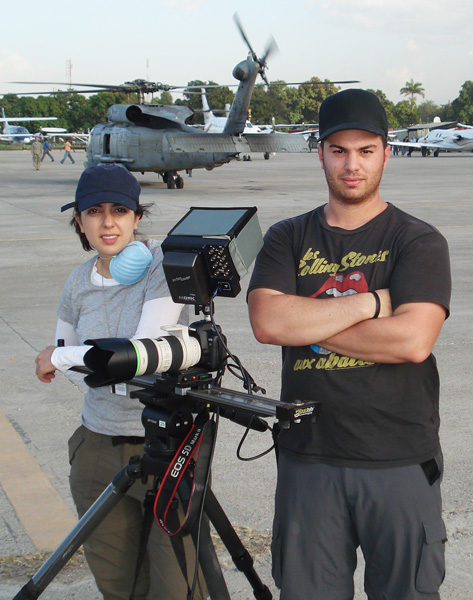
Production
All the ENG footage was shot with a Panasonic HPX-500. The second shooter was my good friend Raymond Bishir, who is a photographer and wanted to shoot his personal work as well. Every day we not only had to shoot, edit, and transmit two three-minute reports but to make enough time to shoot our personal stuff. We established a workflow in which we would alternate between news shooting and personal shooting. We were fortunate enough that the two journalists we were working with (Susan Modaress and Hassan Abu Zaytoon) were very supportive and patient with us.
Working in an earthquake zone is physically and emotionally overwhelming. Aside from the documentary I shot in Egypt and Lebanon this was my first time shooting with a journalistic mindset. Having to document a natural disaster of this magnitude was very difficult to grasp. One of the main factors that we were all concerned about the logistical challenges such as housing, food, water, transportation, and safety; however I tried not think about the obstacles as they tend to be distracting. That being said, we packed very lightly. Each of us only brought a limited amount of personal belongings and the bare essential tools to get the job done.
Tools I used for the montage.
–Tenba shootout rolling backpack
-Canon 5D mark2
–Kessler Pocket Dolly
–Miller solo ENG legs w/ the Arrow 25 head, a few lenses
-Canon 16-35, 24-70, 70-200 2.8 L series),
–Marshall 7inch HDMI monitor
-5 Canon BPE-6 camera batteries.
-Apple Macbook pro
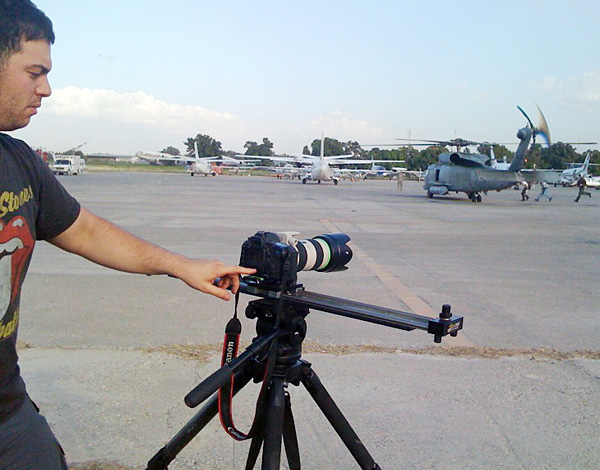
It’s crucial to keep a low profile when shooting in disaster zones so I chose not to bring a mattebox, follow focus, filters, and barely ever shot with the monitor. The pocket dolly was almost always part of the setup as it takes seconds to build and works flawlessly. I strongly believe that a dolly shot is far more powerful than a static shot so I tried using it any chance I could. I chose to shoot everything between a 100-320 ISO and nothing faster than a 5.6 f-stop. I tried to keep my shutter speed around 1/60 of a second to get it closest to a film shutter degree. I cranked up the shutter speed for all the water distribution shots to crystallize the water.
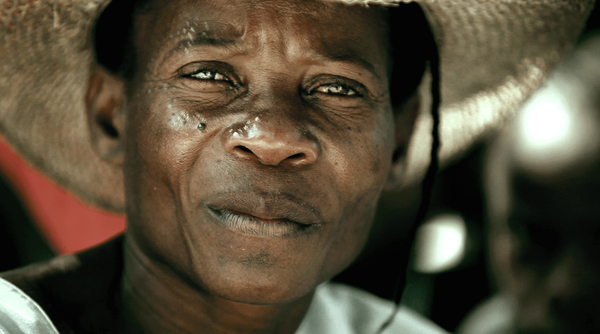
One of my biggest challenges when it came to shooting was the contrast between the darker skin complexions and direct sunlight. I worked around it by finding a midpoint between the two and exposing for it. Turning down the on-camera contrast also helped significantly with the latitude. I knew I wouldn’t achieve the look I wanted in camera so I shot everything with a standard pictures style and tweaked the look in post.
Post Production
I’ve been listening to Eric Wollo ’s music for quite some time now and I knew that “Sounds of the Seen Part 1” was the track I wanted to use. I edited everything in the native H.264 codec and exported as Apple ProRes 422 after I was done editing. The montage was edited in a couple of days using Final Cut Pro and most of the time was spent grading.
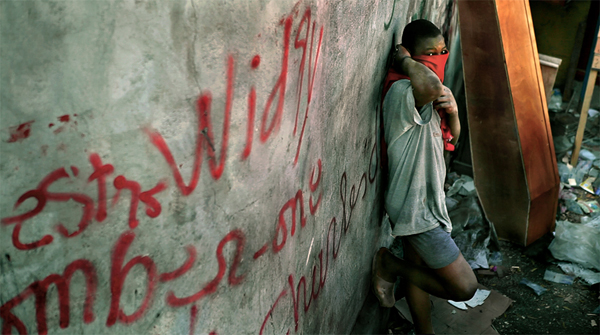
My first step in grading is almost always retouching a screenshot from the clip in Photoshop. I then use the Photoshopped still as a reference for my color grading. I started the grade in FCP using the three-way color corrector to shift the mids and shadows to a warmer color tone. From here on out I live in Magic Bullet Looks to fine-tune the exposure and colors. I rarely ever use the looks presets as they are overused and can get more precise results by building my own.
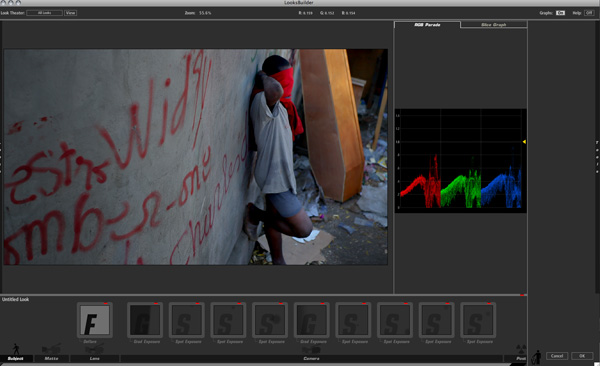
Some of the most useful tools in Magic Bullet are the spot exposure, grad exposure, vignette, contrast and curves. I faced major latitude issues due to the dark skin completions and the skin tones were almost always too bright or too dark. The spot exposure really helped in solving this issue.
The grad exposure is an essential tool to draw attention to your subjects. I used it to bring the exposure of the foreground or background up or down a few stops.
I’ve also been spending a lot of time recently trying to learn Apple Color, as its tweaking tools are far more precise than Final Cut Pro or Magic Bullet.




Khalid was born in Doha Qatar in December 1985. He spent his childhood traveling from one country to another, until his father was relocated to Wayne New Jersey in 1993. Inspired by music, math, and independent film khalid discovered his passion for filmmaking at an early age. In 2004 he attended the New York Film Academy and later won best screen play at the 2005 New York International Film Festival for his short feature “Optimistic”. After graduating he started working on commercials, music videos, and corporate events in hope to finance his personal projects.
His website is here






